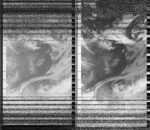Public Archive
A patchy record of DIY satellite imagery and weather notes since 2020. The open-weather public archive is open to everyone willing and able to contribute.
Words for Climate
An evolving set of words chosen by contributors to reflect their experiences of the climate crisis.
Filter by
Ground Station Type
Automatic Ground Stations are local, semi-permanent stations that record and upload satellite transmissions automatically once per day. Manual ground stations are DIY and often mobile; operators manually record and upload satellite transmissions.
Satellites
The archive contains Automatic Picture Transmissions (APT) by US weather satellites NOAA-15, NOAA-18 and NOAA-19.
Nowcasts
Collective earth-sensing events led by open-weather, co-produced by a network of contributors around the world.
Contributors
A list of tagged contributors only. Please contact us if you want to be added.
Automatic Ground Stations
Search
2025-04-15 22:57:00
Hospitalfield
Arbroath, Scotland
Scotland
NOAA-18
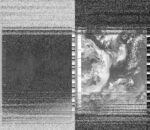
2025-04-15 19:35:37
Richard A Carter
York, United Kingdom
United Kingdom
NOAA-15
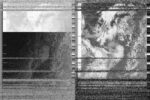
A very noisy sounding, but fortunately free of the audio cut-outs that have beset many recent efforts. A chance also to see the image 'click' across the night time threshold.
2025-04-15 19:35:00
Goownown Growers
The Seaweed Institute
CAST, Helston, Cornwall, United Kingdom
United Kingdom
NOAA-15

2025-04-15 22:08:00
Cosmos Astronomy Club MIT WPU
Pune, India
India
NOAA-19

2025-04-14 23:10:00
Goownown Growers
The Seaweed Institute
CAST, Helston, Cornwall, United Kingdom
United Kingdom
NOAA-18

2025-04-14 23:09:00
Hospitalfield
Arbroath, Scotland
Scotland
NOAA-18
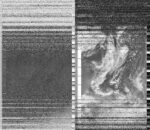
2025-04-14 12:09:00
Zack Wettstein
Seattle, United States
United States
NOAA-18

2025-04-14 09:02:00
Zack Wettstein
Seattle, United States
United States
NOAA-15

2025-04-14 08:41:00
Heidi Neilson
Gilboa, New York, United States
United States
NOAA-15
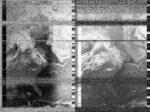
2025-04-13 22:06:00
Zack Wettstein
Seattle, United States
United States
NOAA-19

2025-04-13 19:11:00
Zack Wettstein
Seattle, United States
United States
NOAA-15

2025-04-13 20:24:00
Filip Shatlan and Diana Engelmann
Gainesville, Florida , United States
United States
NOAA-15
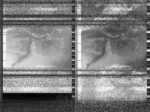
2025-04-13 12:22:00
Zack Wettstein
Seattle, United States
United States
NOAA-18

2025-04-13 11:59:00
Heidi Neilson
Gilboa, New York, United States
United States
NOAA-18
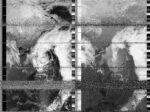
2025-04-13 11:47:00
Goownown Growers
The Seaweed Institute
CAST, Helston, Cornwall, United Kingdom
United Kingdom
NOAA-19

2025-04-13 08:59:00
Hospitalfield
Arbroath, Scotland
Scotland
NOAA-15
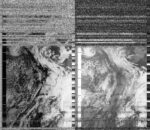
2025-04-12 22:18:00
Zack Wettstein
Seattle, United States
United States
NOAA-19

2025-04-12 19:37:00
Zack Wettstein
Seattle, United States
United States
NOAA-15

2025-04-12 21:50:00
Hospitalfield
Arbroath, Scotland
Scotland
NOAA-19

2025-04-12 12:35:00
Zack Wettstein
Seattle, United States
United States
NOAA-18

2025-04-12 12:16:00
Filip Shatlan and Diana Engelmann
Gainesville, Florida , United States
United States
NOAA-18
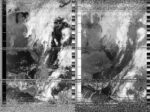
2025-04-12 12:12:00
Heidi Neilson
Gilboa, New York, United States
United States
NOAA-18
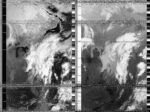
2025-04-12 12:00:00
Goownown Growers
The Seaweed Institute
CAST, Helston, Cornwall, United Kingdom
United Kingdom
NOAA-19

2025-04-11 22:31:00
Zack Wettstein
Seattle, United States
United States
NOAA-19

2025-04-11 23:48:00
Filip Shatlan and Diana Engelmann
Gainesville, Florida , United States
United States
NOAA-18
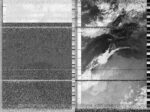
2025-04-11 22:05:00
Heidi Neilson
Gilboa, New York, United States
United States
NOAA-19
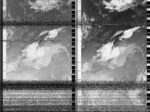
2025-04-11 22:02:00
Hospitalfield
Arbroath, Scotland
Scotland
NOAA-19
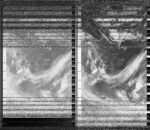
2025-04-11 12:47:00
Zack Wettstein
Seattle, United States
United States
NOAA-18

2025-04-11 19:39:00
Goownown Growers
The Seaweed Institute
CAST, Helston, Cornwall, United Kingdom
United Kingdom
NOAA-15

2025-04-11 08:40:00
Zack Wettstein
Seattle, United States
United States
NOAA-15

2025-04-11 12:14:47
Richard A Carter
University of York, Campus East, United Kingdom
United Kingdom
NOAA-18
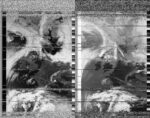
Today's sounding was mainly a test run, with noise and audio cutouts (the dark striations) proving a persistent issue - although the image was better than expected. Suspect these artefacts are a quirk of the new laptop I have been using, as previous devices (now sadly defunct) were fine. Once again, a reminder of the intricate chain of systems that all need to align in order for a recording to be gathered and processed.
2025-04-10 22:49:00
Zack Wettstein
Seattle, United States
United States
NOAA-18

2025-04-10 22:15:00
Goownown Growers
The Seaweed Institute
CAST, Helston, Cornwall, United Kingdom
United Kingdom
NOAA-19

2025-04-10 11:14:00
Zack Wettstein
Seattle, United States
United States
NOAA-19

2025-04-10 19:35:00
wm6x
Central Europe, Czech republic
Czech republic
NOAA-15
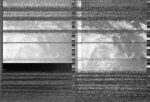
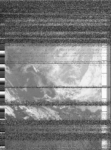
I dont see a lot, it is my first experience. But I see a lot of clouds above balkan countries
2025-04-10 09:06:00
Zack Wettstein
Seattle, United States
United States
NOAA-15

2025-04-10 19:24:00
Cosmos Astronomy Club MIT WPU
Pune, India
India
NOAA-15

2025-04-10 08:48:00
Filip Shatlan and Diana Engelmann
Gainesville, Florida , United States
United States
NOAA-15
2025-04-10 08:45:00
Heidi Neilson
Gilboa, New York, United States
United States
NOAA-15
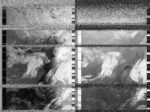
2025-04-10 12:27:00
Hospitalfield
Arbroath, Scotland
Scotland
NOAA-18
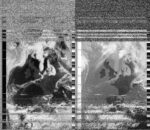
Unseasonably hot for April. A sustained period of dry weather and clear skies. Dusty streets, high pollution and tree pollen adrift. Throat scratch. Can't actually remember the last time it rained. Reports of wild fires on the west coast, on Arran and Bute. It's the school holidays. Another news report of chaos at East coast beaches, masses of people flocking to the sea. Ice cream headaches for North sea dookers. As one of them, met an unexpected headwind cycling east from Arbroath to a beach, but the breeze felt hot. Wind sock dancing. And still cold at night.
2025-04-09 22:57:00
Zack Wettstein
Seattle, United States
United States
NOAA-19

2025-04-09 21:16:00
Zack Wettstein
Seattle, United States
United States
NOAA-19

2025-04-09 23:31:00
Vienna Automatic
Vienna, Austria
Austria
NOAA-18
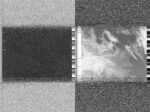
2025-04-09 21:43:00
Cosmos Astronomy Club MIT WPU
Pune, India
India
NOAA-19

2025-04-09 11:04:00
Heidi Neilson
Gilboa, New York, United States
United States
NOAA-19
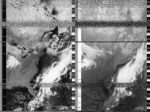
2025-04-09 09:07:00
Goownown Growers
The Seaweed Institute
CAST, Helston, Cornwall, United Kingdom
United Kingdom
NOAA-15

2025-04-09 09:03:00
Hospitalfield
Arbroath, Scotland
Scotland
NOAA-15
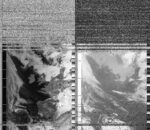
2025-04-08 23:15:00
Zack Wettstein
Seattle, United States
United States
NOAA-18

2025-04-07 10:45:17
David Alejandro Saavedra Herrera
Near of Zapatoca Market in the capital of Colombia, Colombia
Colombia
NOAA-18
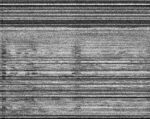
Well we are facing a very long rainy season so i guess thats why we can see that much clouds in the image
2025-04-07 10:45:17
David Alejandro Saavedra Herrera
Near of Zapatoca Market in the capital of Colombia, Colombia
Colombia
NOAA-18

It was hard to get it , but still i got an awesome result even for my first time and about the weather we are facing a rainy season so we can see the clouds
2025-04-08 19:41:00
Zack Wettstein
Seattle, United States
United States
NOAA-15

2025-04-08 11:40:00
Zack Wettstein
Seattle, United States
United States
NOAA-19

2025-04-08 19:18:00
Hospitalfield
Arbroath, Scotland
Scotland
NOAA-15
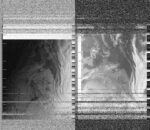
2025-04-08 21:56:00
Cosmos Astronomy Club MIT WPU
Pune, India
India
NOAA-19

2025-04-08 11:20:00
Filip Shatlan and Diana Engelmann
Gainesville, Florida , United States
United States
NOAA-19
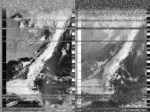
2025-04-08 11:17:00
Heidi Neilson
Gilboa, New York, United States
United States
NOAA-19
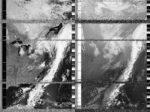
2025-04-08 12:56:00
Goownown Growers
The Seaweed Institute
CAST, Helston, Cornwall, United Kingdom
United Kingdom
NOAA-18

2025-04-07 23:28:00
Zack Wettstein
Seattle, United States
United States
NOAA-18

2025-04-07 21:41:00
Zack Wettstein
Seattle, United States
United States
NOAA-19

2025-04-07 23:02:00
Heidi Neilson
Gilboa, New York, United States
United States
NOAA-18
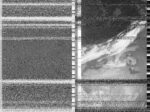
2025-04-07 22:52:00
Filip Shatlan and Diana Engelmann
Gainesville, Florida , United States
United States
NOAA-19
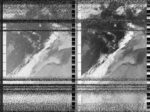
2025-04-07 22:59:00
Hospitalfield
Arbroath, Scotland
Scotland
NOAA-18
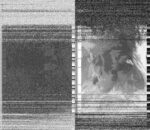
2025-04-05 10:40:00
Chase Graham
Defuniak Springs Fl, U.S.
U.S.
NOAA-19
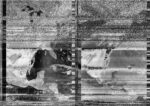
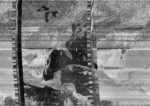
2025-04-07 19:44:00
Goownown Growers
The Seaweed Institute
CAST, Helston, Cornwall, United Kingdom
United Kingdom
NOAA-15

2025-04-07 12:29:00
Vienna Automatic
Vienna, Austria
Austria
NOAA-18

2025-04-06 21:54:00
Zack Wettstein
Seattle, United States
United States
NOAA-19

2025-04-06 23:15:00
Heidi Neilson
Gilboa, New York, United States
United States
NOAA-18
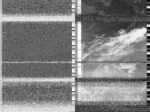
2025-04-06 23:12:00
Goownown Growers
The Seaweed Institute
CAST, Helston, Cornwall, United Kingdom
United Kingdom
NOAA-18

2025-04-06 12:11:00
Zack Wettstein
Seattle, United States
United States
NOAA-18

2025-04-06 19:29:00
Vienna Automatic
Vienna, Austria
Austria
NOAA-15

2025-04-06 09:11:00
Zack Wettstein
Seattle, United States
United States
NOAA-15

2025-04-06 08:53:00
Filip Shatlan and Diana Engelmann
Gainesville, Florida , United States
United States
NOAA-15
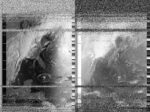
2025-04-06 11:31:00
Hospitalfield
Arbroath, Scotland
Scotland
NOAA-19
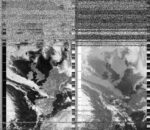
2025-04-05 22:06:00
Zack Wettstein
Seattle, United States
United States
NOAA-19

2025-04-05 19:20:00
Zack Wettstein
Seattle, United States
United States
NOAA-15

2025-04-05 23:25:00
Goownown Growers
The Seaweed Institute
CAST, Helston, Cornwall, United Kingdom
United Kingdom
NOAA-18

2025-04-05 22:35:00
Matti
Kassel, in my Backyard., Germany
Germany
NOAA-19
Today was one of the first warmer days of spring here in Kassel, Germany. But by the night it gets quite chill again.
2025-04-05 12:24:00
Zack Wettstein
Seattle, United States
United States
NOAA-18

2025-04-05 12:01:00
Heidi Neilson
Gilboa, New York, United States
United States
NOAA-18
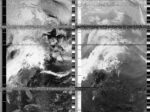
2025-04-05 11:08:00
Vienna Automatic
Vienna, Austria
Austria
NOAA-19

2025-04-05 09:08:00
Hospitalfield
Arbroath, Scotland
Scotland
NOAA-15
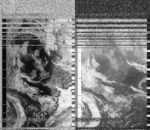
"To discuss the weather together = this it’s all the same of talking/ not talking about love." Barthes, The Preparation of The Novel
Familiar but ever shifting images. A view from above. From the ground it’s been clear skies, daffodils, fire crackle, cold hands, cold breeze, hot cheeks, happy tears. Familiar but ever shifting images.
Always contradictions. To talk/ not talk about love in times of genocide. To talk/ not talk about weather in times like these.
2025-04-04 22:19:00
Zack Wettstein
Seattle, United States
United States
NOAA-19

2025-04-04 23:37:00
Filip Shatlan and Diana Engelmann
Gainesville, Florida , United States
United States
NOAA-18
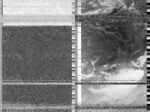
2025-04-04 19:46:00
Zack Wettstein
Seattle, United States
United States
NOAA-15

2025-04-04 22:57:00
Vienna Automatic
Vienna, Austria
Austria
NOAA-18

2025-04-04 12:37:00
Zack Wettstein
Seattle, United States
United States
NOAA-18

2025-04-04 19:22:00
Hospitalfield
Arbroath, Scotland
Scotland
NOAA-15
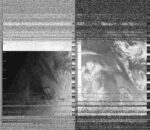
2025-04-04 12:14:00
Heidi Neilson
Gilboa, New York, United States
United States
NOAA-18
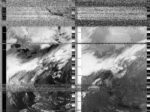
2025-04-04 12:00:00
Goownown Growers
The Seaweed Institute
CAST, Helston, Cornwall, United Kingdom
United Kingdom
NOAA-19

2025-04-04 08:21:00
Cyprus Amateur Radio Society
Nicosia , Cyprus
Cyprus
NOAA-15

2025-04-03 23:09:00
Vienna Automatic
Vienna, Austria
Austria
NOAA-18

2025-04-03 22:02:00
Hospitalfield
Arbroath, Scotland
Scotland
NOAA-19
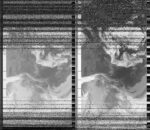
2025-04-03 12:50:00
Zack Wettstein
Seattle, United States
United States
NOAA-18

2025-04-03 19:49:00
Goownown Growers
The Seaweed Institute
CAST, Helston, Cornwall, United Kingdom
United Kingdom
NOAA-15

2025-04-03 11:02:00
Zack Wettstein
Seattle, United States
United States
NOAA-19

2025-04-03 08:49:00
Zack Wettstein
Seattle, United States
United States
NOAA-15

2025-04-03 08:28:00
Heidi Neilson
Gilboa, New York, United States
United States
NOAA-15
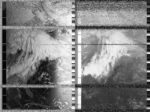
2025-04-03 10:54:00
Cyprus Amateur Radio Society
Nicosia , Cyprus
Cyprus
NOAA-19

2025-04-02 22:51:00
Zack Wettstein
Seattle, United States
United States
NOAA-18

2025-04-02 22:15:00
Hospitalfield
Arbroath, Scotland
Scotland
NOAA-19
